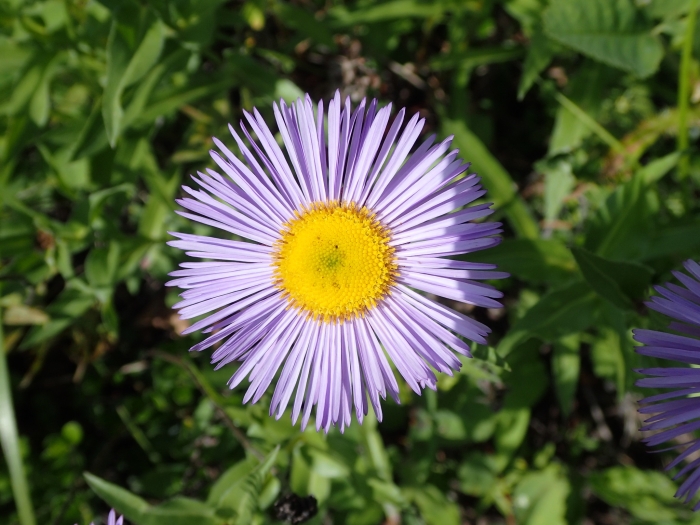Aspen Fleabane
(Erigeron speciosus)
Aspen Fleabane (Erigeron speciosus)
/
/

mfeaver
CC BY 4.0


















































Estimated Native Range
Summary
Aspen Fleabane is valued for its long flowering season and ability to attract butterflies and other beneficial insects. It is used in wildflower gardens, as a border plant, and in naturalized areas. This species is adaptable to a range of soil types, provided they have good drainage, and it thrives in both full sun and part shade. While generally low-maintenance, it can be susceptible to powdery mildew and should be spaced adequately to ensure good air circulation. Deadheading spent flowers can encourage a longer blooming period and prevent self-seeding if undesired.CC BY-SA 4.0
Plant Description
- Plant Type: Herb
- Height: 1-2 feet
- Width: 1-2 feet
- Growth Rate: Moderate
- Flower Color: Pink, Purple
- Flowering Season: Summer, Fall
- Leaf Retention: Deciduous
Growth Requirements
- Sun: Full Sun, Part Shade
- Water: Medium
- Drainage: Fast, Medium
Common Uses
Bee Garden, Bird Garden, Butterfly Garden, Deer Resistant, Drought Tolerant, Groundcover, Low Maintenance, Salt Tolerant, Showy Flowers, Street Planting
Natural Habitat
native to meadows, open woodlands, and forest clearings from Western Canada to Northwest Mexico
Other Names
Common Names: Showy Fleabane , Showy Daisy , Garden Fleabane , Ansehnliches Berufkraut , Belle Vergerette , Skönbinka
Scientific Names: Erigeron speciosus , Erigeron macranthus , Erigeron grandiflorus , Erigeron speciosus var. macranthus , Erigeron subtrinervis var. conspicuus , Erigeron subtrinervis subsp. conspicuus , Erigeron leucotrichus , Erigeron conspicuus , Erigeron eucephaloides , Stenactis speciosa
GBIF Accepted Name: Erigeron speciosus (Lindl.) DC.